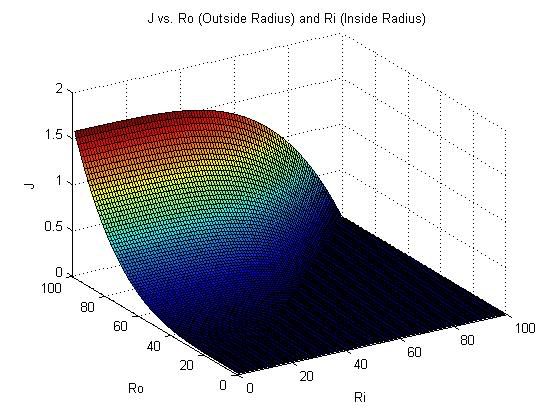- Location
- Bountiful, land of rocks
Here is a little graph showing the relationship between the inside radius and the outside radius as it relates to strength (J).

Aren't we missing something there?
Here is a little graph showing the relationship between the inside radius and the outside radius as it relates to strength (J).

I would think that the thickness of the wall tubing would be more important than size.
Aren't we missing something there?
Could be, what are you refering to?
A key, a legend or whatever for the graph? (or maybe I just haven't tried to analyze it enough)
A key, a legend or whatever for the graph? (or maybe I just haven't tried to analyze it enough)
That and it's possible to have a larger internal diameter than external...
In looking at these formulas and graphs, We have to realize that this is in a perfect world where the only force the shaft is subjected to is perfect rotation and the surface of the tube is without any nicks, scratches, etc., there are no bounces back and forth, etc., etc., etc. In the real world where we rockcrawl, a thicker wall is needed just to protect the shaft from rocks, bounces, etc. But, in general terms and in lab experiments, as posted above (weight for weight) bigger tube is stronger than thicker wall. Of course, thicker wall combined with bigger diam. is better (weight disregarded). That said, 10 inch solid bar would be REALLY strong (but not very practical)
